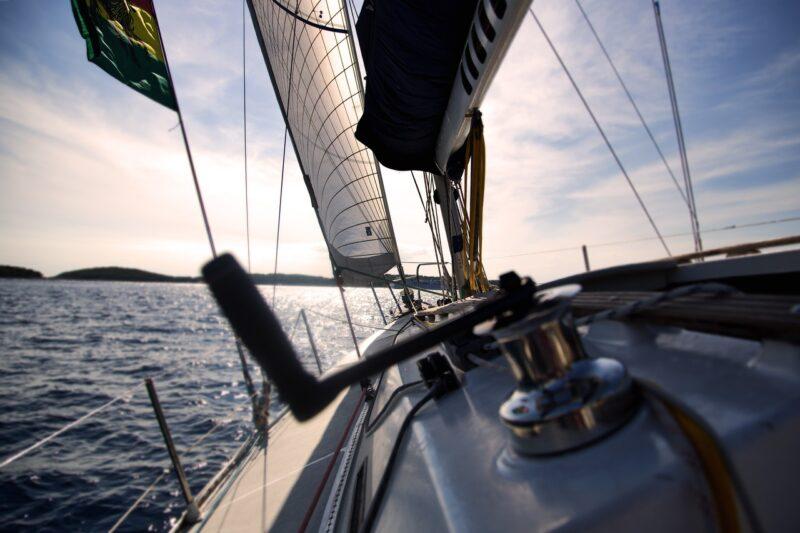I have been puzzling over the best way to convey what a living system feels like for people who don’t usually think their organization is a living system, or people who haven’t experienced living systems in some way. To help, I have been searching for metaphors to shift our usual thinking of organizations from fixed and inert to alive and evolving. In this blog, I’ll unpack my first metaphor, hoping to illustrate how living organizations need to be led – and partnered with – to unleash the full possibilities in a system.
Motorboats, inert organizations, and leadership
As I was thinking about how a living system “feels,” I began to also think about the difference between motorboats and sailboats. Motorboats have an engine, for example. If you’re trying to get to a destination, your job as a pilot is to head off in the direction you want to go. The underlying assumption is that if your boat is big enough and your engine is strong enough, you can usually weather the tides, winds, and waves and reach your desired destination.
In this metaphor, the person steering the boat must understand the current weather and water challenges or disruptions in play. These conditions (short of a hurricane) don’t stop the pilot from steering the boat to the destination. If there are minor craft warnings, the logical response is to pull into a safe harbor and wait out the storm. Once the storm is over, the pilot heads back out and continues their journey.
Most leaders believe their organization is a motorboat. While they understand that disruptions (or storms) are increasing, they still assume they are in control of the boat’s direction and destination. The underlying and unexamined assumption is that the pilot can control and steer the organization – the boat. In other words, the pilot/leader can own it.
Unfortunately, this mindset is ineffective in navigating disruptions in today’s “climate.” Instead, we need to focus on more adaptive practices. That’s when we turn to the idea of a sailboat.
Sailing, leadership, living systems
Sailing a boat without a motor is very different. When you sail, you are usually very aware that you must be in a relationship with many things to get the boat moving. Wind strength and direction, water conditions, the delicate relationship between water and wind and the boat’s design (taking into account things like ballast and a centerboard) are just some of the factors in sailing. Obviously, the knowledge and skill of the sailor are also crucial to successful sailing.
The main point is this: The interactions between all these variables help the boat go where the sailor would like it to go.
The biggest difference between a motorboat and a sailboat is that the sailor needs to create a partnership with the external environment. They must dance with these changing dynamics to sail the boat successfully.
The external conditions of wind and water and their constant change help demonstrate the dynamics of a living system. A living system is not in the control of an organizational leader. The leader can, however, have a lot of fun dancing with the changing dynamics of the system as they learn to read the waves and wind. By increasing their knowledge and skill, these sailor/leaders can leverage the energy of that living system to help navigate and find a destination in partnership with the living system.
Leadership, seen through the lens of sailing, gives us a glimpse into what changes occur when we shift our mindset from a fixed / inert organization to a dynamic, interdependent living system. It requires valuing relationships over ownership; for many, that’s a big transition.






